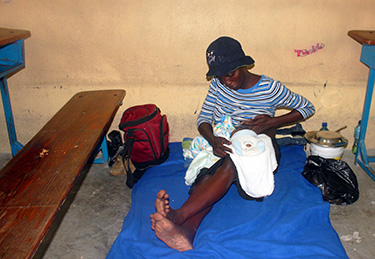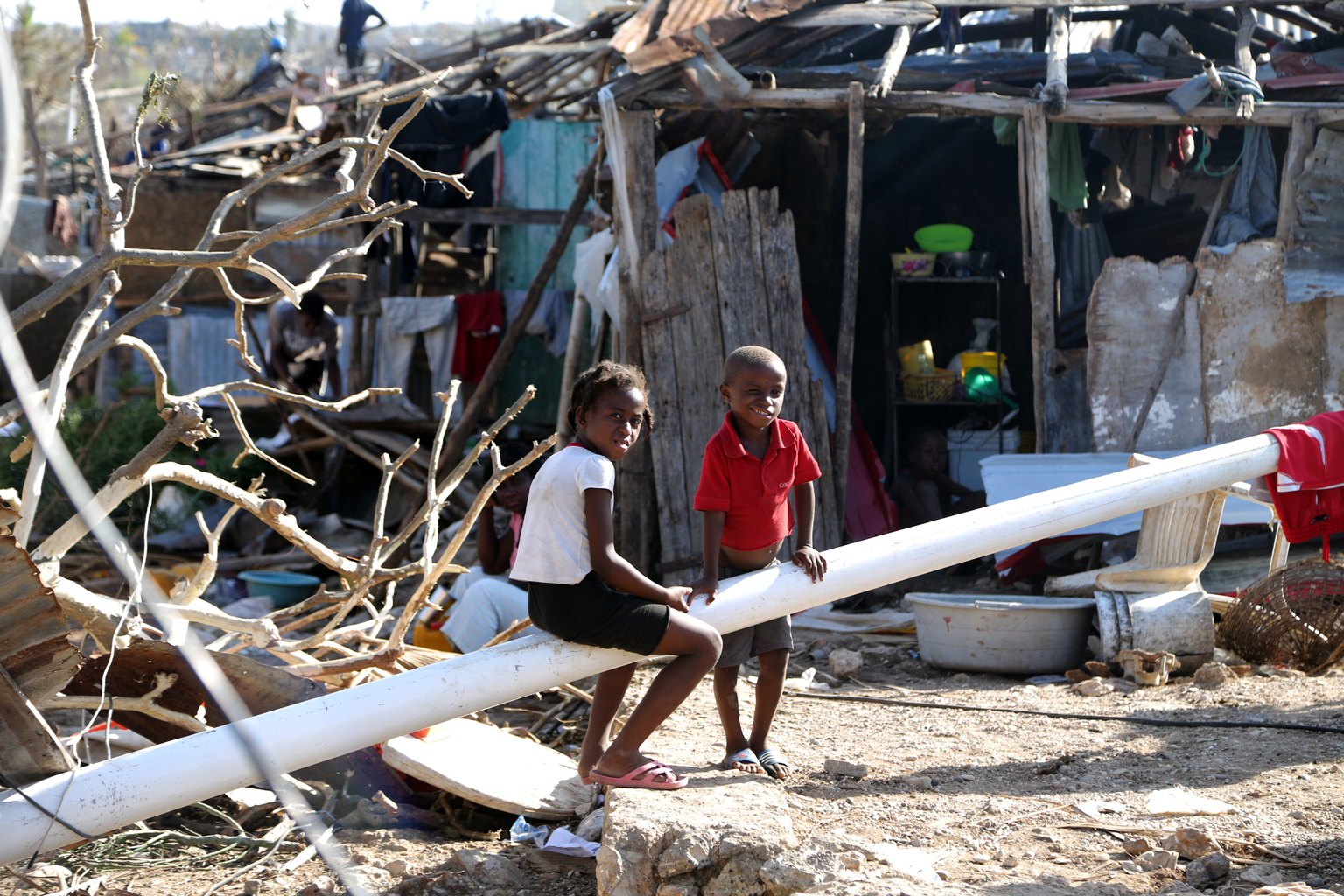Helping communities in Haiti recover from Hurricane Matthew
2016-10-06
© UNICEF/UN034843/Abassi, UN-MINUSTAH
By Jean Panel Fanfan
Hundreds of thousands of people are in need of humanitarian assistance after Hurricane Matthew passed over Haiti on 4 October. An estimated 500,000 children live in the hardest-hit areas. Hear one woman’s story of survival, and learn how UNICEF is responding to the needs on the ground.
PORT-AU-PRINCE, Haiti/HONG KONG, 6 October 2016 – Hermione Ismail, 39, a mother of six young children, looks as though she is emerging from a nightmare. With haggard eyes, her voice still trembling, she can barely find words to describe what she’s lived through. She tightly cradles her four-day-old son in her arms – he was born just two days before Hurricane Matthew hit Haiti.
"I gave birth to the baby Saturday night at home. I have not had time to go to the hospital. My house was damaged and it was impossible to stay, so we came to this shelter," she says.
As she tries to nurse her son, we listen to the noise and bustle of people housed in the shelter located in the Samot Carrefour Community School.
Hermione, still in shock, does not complain of the reception in the shelter. She and her children have been treated well – they have food and even a mattress to sleep on. And she finally had the opportunity to have her baby seen by doctors.
Race against time

© UNICEF Haiti/2016 Hermione Ismail nurses her son at the Samot Carrefour Community School. The school is being used as a temporary shelter for people who evacuated their homes before the hurricane.
People came to this shelter voluntarily, and both the Directorate of Civil Protection (DPC) and the fire igade facilitated the evacuation process. Prior to the hurricane, authorities went door-to-door to raise awareness about the storm, and sound trucks played warning messages urging people to leave the coastal areas.
The DPC agents are present in large numbers in Carrefour, and regularly monitor the situation. However the status of other communal sections – many as far as 8 hours walking distance – remains a mystery, as they still await news from agents sent to the field.
The shelter in the Samot Carrefour Community School holds more than 140 people, including 30 children, but life inside remains organized. Those in charge try to keep the toilets clean to avoid contamination from water-borne diseases. Thanks to the diligence of the mayor of Carrefour and other organizations, they manage to feed everyone.
"The shelter is fairly peaceful because support was given by the Town Hall with partners and the DPC,” says Marc-Henry Beauzil, coordinator of the DPC at Carrefour. “There is no real water problem. Regarding children, Adventist Hospital of Diquini provides assistance through visits. They gave them advice on sanitation practices to prevent disease."
But soon, the families will need to find more permanent housing. The government decreed the reopening of classes on Monday, 10 October, and those in the shelter must evacuate before academic activities resume in the school.
Since the announcement of the hurricane, UNICEF has mobilized its entire support team to the Government and implemented its response plan to protect people affected by the storm, especially children.
"In times of disaster, children are the ones who suffer the most, because they’re the weakest,” says Marc Vincent, UNICEF Representative in Haiti. “Our role at UNICEF is to work to ensure that children's rights are respected and they are not the targets of any kind of abuse. We place special emphasis on protection by working closely with the IBESR [Haiti’s Institute of Social Well-Being and Research]."
The emergency team and partners remain vigilant to respond to and prevent any cholera outeaks.
UNICEF is also closely collaborating with Pan American Health Organization (PAHO) for the emergency health response and supporting the nutrition section of the Ministry of Health. The organization will help re-establish sectoral coordination at the central and departmental levels to maximize preventive measures and care capacity in the affected areas.
In the days following the hurricane, UNICEF has been working with the Government and the humanitarian community to pre-position crucial stocks for 10,000 people in three areas: the South, Artibonite and Northwest. In each of these areas, aid kits for 650 families are ready to be distributed. These contain hygiene kits, at-home water treatments, a mosquito net, a bucket and soap.

© UNICEF/UN035024/Moreno Gonzalez Two children sit on a oken light post in the Grand-Anse Department, Haiti. It is estimated that half a million children live in the areas most affected by the hurricane, particularly in the Grand-Anse and the South.









